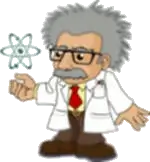Fraction calculator
This calculator multiplies fractions. Multiplies all numerators and places the result over the product of all denominators. Then simplify the result to the lowest terms or a mixed number.
The result:
3/5 × 7/9 = 7/15 ≅ 0.4666667
The result spelled out in words is seven fifteenths.How do we solve fractions step by step?
- Multiple: 3/5 * 7/9 = 3 · 7/5 · 9 = 21/45 = 7 · 3/15 · 3 = 7/15
Multiply both numerators and denominators. Result fraction keep to lowest possible denominator GCD(21, 45) = 3. In the following intermediate step, cancel by a common factor of 3 gives 7/15.
In other words, three fifths multiplied by seven ninths equals seven fifteenths.
Rules for expressions with fractions:
Fractions - write a forward slash to separate the numerator and the denominator, i.e., for five-hundredths, enter 5/100. If you use mixed numbers, leave a space between the whole and fraction parts.Mixed numerals (mixed numbers or fractions) - keep one space between the whole part and fraction and use a forward slash to input fraction i.e., 1 2/3 . A negative mixed fraction write for example as -5 1/2.
A slash is both a sign for fraction line and division, use a colon (:) for division fractions i.e., 1/2 : 1/3.
Decimals (decimal numbers) enter with a decimal dot . and they are automatically converted to fractions - i.e. 1.45.
Math Symbols
| Symbol | Symbol name | Symbol Meaning | Example |
|---|---|---|---|
| + | plus sign | addition | 1/2 + 1/3 |
| - | minus sign | subtraction | 1 1/2 - 2/3 |
| * | asterisk | multiplication | 2/3 * 3/4 |
| × | times sign | multiplication | 2/3 × 5/6 |
| : | division sign | division | 1/2 : 3 |
| / | division slash | division | 1/3 / 5 |
| : | colon | complex fraction | 1/2 : 1/3 |
| ^ | caret | exponentiation / power | 1/4^3 |
| () | parentheses | calculate expression inside first | -3/5 - (-1/4) |
Examples:
• adding fractions: 2/4 + 3/4• subtracting fractions: 2/3 - 1/2
• multiplying fractions: 7/8 * 3/9
• dividing Fractions: 1/2 : 3/4
• reciprocal of a fraction: 1 : 3/4
• square of a fraction: 2/3 ^ 2
• cube of a fraction: 2/3 ^ 3
• exponentiation of a fraction: 1/2 ^ 4
• fractional exponents: 16 ^ 1/2
• adding fractions and mixed numbers: 8/5 + 6 2/7
• dividing integer and fraction: 5 ÷ 1/2
• complex fractions: 5/8 : 2 2/3
• decimal to fraction: 0.625
• Fraction to Decimal: 1/4
• Fraction to Percent: 1/8 %
• comparing fractions: 1/4 2/3
• square root of a fraction: sqrt(1/16)
• expression with brackets: 1/3 * (1/2 - 3 3/8)
• compound fraction: 3/4 of 5/7
• fractions multiple: 2/3 of 3/5
• divide to find the quotient: 3/5÷2/3
The calculator follows well-known rules for the order of operations. The most common mnemonics for remembering this order are:
- PEMDAS: Parentheses, Exponents, Multiplication, Division, Addition, Subtraction.
- BEDMAS: Brackets, Exponents, Division, Multiplication, Addition, Subtraction.
- BODMAS: Brackets, Order (or "Of"), Division, Multiplication, Addition, Subtraction.
- GEMDAS: Grouping symbols (brackets: (){}), Exponents, Multiplication, Division, Addition, Subtraction.
- MDAS: Multiplication and Division (same precedence), Addition and Subtraction (same precedence). MDAS is a subset of PEMDAS.
1. Multiplication/Division vs. Addition/Subtraction: Always perform multiplication and division *before* addition and subtraction.
2. Left-to-Right Rule: Operators with the same precedence (e.g., + and -, or * and /) must be evaluated from left to right.
Fractions in word problems:
- Reduce fractions
 The following fraction is reduced to its lowest terms except one. Which of these: A. 98/99 B. 73/179 C. 1/250 D. 81/729
The following fraction is reduced to its lowest terms except one. Which of these: A. 98/99 B. 73/179 C. 1/250 D. 81/729 - Chef Davido
 Italian chef Davido put 36 pieces of pineapple on his Hawaiian pizza and then divided it into sixths so that each piece had the same amount of pineapple. Luke bought one sixth of Davido's pizza and ate it with gusto. How many pieces of pineapple did Luke
Italian chef Davido put 36 pieces of pineapple on his Hawaiian pizza and then divided it into sixths so that each piece had the same amount of pineapple. Luke bought one sixth of Davido's pizza and ate it with gusto. How many pieces of pineapple did Luke - Convert 8
 Convert 11/2 into a percent?
Convert 11/2 into a percent? - Hardware store
 At the hardware store, 1/4 of the nails are size 2d, and 3/8 of the nails are size 4d. What fraction of the nails are either size 2d or 4d?
At the hardware store, 1/4 of the nails are size 2d, and 3/8 of the nails are size 4d. What fraction of the nails are either size 2d or 4d? - Add to subtracting
 Solve a simple equation with fractions: n-1/6=1/2
Solve a simple equation with fractions: n-1/6=1/2 - Convert 5883
 Convert ratio to basic form: 24:32
Convert ratio to basic form: 24:32 - 6 cups of strawberries
 Mr. Hunter decided to make a healthy snack for the 20 students in his class. He gave each student a dish of yogurt and divided 6 cups of strawberries equally among the dishes. How many cups of strawberries did each student get in their yogurt? Write your
Mr. Hunter decided to make a healthy snack for the 20 students in his class. He gave each student a dish of yogurt and divided 6 cups of strawberries equally among the dishes. How many cups of strawberries did each student get in their yogurt? Write your
more math problems »
Last Modified: November 19, 2025
